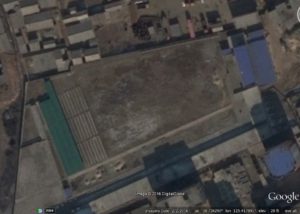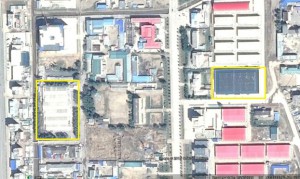By Benjamin Katzeff Silberstein
Since early 2016, the Food and Agriculture Organization of the UN (FAO) has been sounding the alarm bells on North Korea’s food situation. In an interview a few weeks ago with Voice of America’s Korean-language edition, FAO-official Christina Cosiet said that this years’ harvest would be the worst one in four years. One question, dealt with before by this blog, is how bad this really is. After all, the past few years seem to have been abnormally good in a long-run perspective.
But another obvious question is: why do market prices in North Korea tell the opposite story about food supply?
Prices for both rice and foreign currency (US-dollars) have remained remarkably stable for a situation where people should be expecting a worse-than-usual harvest. It is important to bear in mind that prices are largely seasonal and tend to increase in September and October. But unless prices somehow skyrocket in a couple of months, things do not look that bad.
There seem to be two possibilities here: either official production and food supply through the public distribution system simply does not matter that much, because shortages are easily offset by private production and/or imports. Or, the FAO projections simply do not capture North Korean food production as a whole.
For an overview of food prices in the last few years, consider the following graph (click here for larger version):
Graph 1: Prices for rice and foreign currency, in North Korean won. Prices are expressed in averages of local prices in Pyongyang, Sinuiju and Hyesan. Data source: DailyNK market prices.
As this graph shows, both the exchange rate and rice prices have remained relatively stabile over the past few years. Thus far, this summer has been no exception. The following graph shows exchange rates and rice prices from the spring of 2015 till July 2016 (click here for larger version):
Graph 2: Prices for rice and foreign currency, April 2015–July 2016, in North Korean won. Prices are expressed in averages of local prices in Pyongyang, Sinuiju and Hyesan. Data source: DailyNK market prices.
This does not look like the behavior of a nervous market where supply is declining at a drastic rate. Of course, a number of caveats are in order: again, prices are likely to rise through September and October, as they have in the past. Moreover, markets may react to any harvest declines at a later point in time, as they become more apparent.
Even so, it seems inconceivable that market prices would remain so stable if North Korea was experiencing a steep dive in food production. After all, farmers would be able to see signs fairly early on, and their information would presumably spread through the market as a whole. In short, it is logically unthinkable that markets simply would not react to an unusually poor harvest.
This all begs the question of how much market prices tend to correlate with the FAO:s harvest figures overall. The short answer appears to be: not much. The graph below (click here for larger version) shows the average prices for rice and foreign exchange per year on the North Korean market since 2011, and harvest figures drawn from reports by the FAO and the World Food Program (WFP). (See the end of this post for a more detailed explanation of the underlying calculations.)*
Graph 3: Yearly average market prices for rice and US-dollar (in North Korean won), and FAO food production figures. Data source: DailyNK market prices.
As this graph shows, there is generally fairly little correlation between market prices and harvests as calculated by the FAO. Harvests climbed between 2009 and 2015, while market prices climbed and and flattened out from 2012, around the time of Kim Jong-il’s death. Exchange rates and rice prices unsurprisingly move in tandem, but appear little impacted by production figures as reported by the FAO.
It is possible that prices react in a delayed manner to harvests, and that the price stabilization on the market is a result of increased harvests over time. But the consistent trend over several years, with prices going up as harvest figures do, is an unlikely one. Again, it is also difficult to imagine market prices not reacting relatively quickly to noticeable decreases in food production.
So what does all this mean?
It is difficult to draw any certain conclusions. But at the very least, these numbers suggest that the FAO food production projections are not telling the full story about overall food supply in North Korea. Moreover, market signals are telling us that food supply right now is far from as bad as the FAO’s latest claims of lowered production would have it. Rather, prices seem normal and even slightly more stabile than in some previous years with better harvests. In short, the narrative that this year’s harvest is exceptionally poor seems an unlikely one.
*A note on graph 3:
For market prices per year, I calculated an average price from all observations in a given year. The DailyNK price data is reported for three cities separately: Pyongyang, Sinuiju and Hyesan. I have used an average of these three cities for each data observation as the base for calculating yearly averages. This is a somewhat tricky way of measuring, as the amount of data observations, as well as their timing, sometimes varies from year to year. The steep decline in 2009–2010 is primarily caused by the currency denomination, and should not be taken for a real increase in supply.
The FAO food production figures are not reported by calendar year, but published in the fall and projected for the following year. Since these figures best indicate available supply for the year after they are reported, I have assigned them to the year following the reporting year. That is, the figure for 2014 comes from the WFP-estimate for 2013/2014, and so on and so forth.





